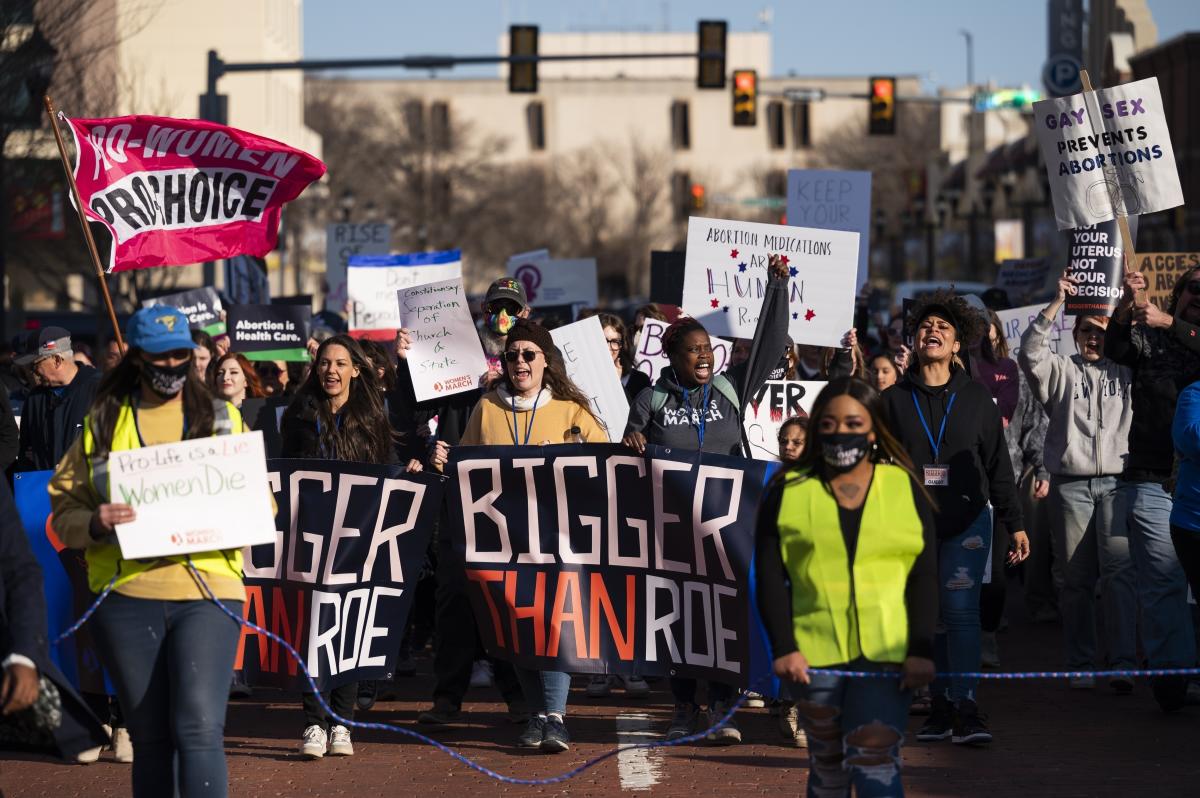Judges, state lawmakers and voters are deciding the future of abortion in the U.S., two years after the Supreme Court shook up the legal status quo with a ruling that overturned Roe v. Wade.
The June 24, 2022 ruling in Dobbs v. Jackson Women’s Health Organization sparked legislative action, protest and numerous lawsuits, putting the issue at the center of politics across the country.
Abortion is now banned at all stages of pregnancy, with limited exceptions, in fourteen Republican-controlled states. In three other states, it is banned after about the first six weeks, before many know they are pregnant. Most Democratic-led states have taken action to protect abortion rights and have become havens for out-of-state patients seeking care.
That has changed the landscape of abortion access, making it a logistical and financial ordeal for many in conservative states. But it hasn’t reduced the total number of procedures performed in the US each month
Here’s what you need to know now about the state of abortion rights in the US.
Limited access to abortion leads to more out-of-state travel
Bans in Republican-led states have prompted many abortion seekers to travel to get care.
That translates into higher costs for gas or plane tickets, hotels and meals; more logistics to sort out, including childcare; and more days off.
A new study from the Guttmacher Institute, which advocates for abortion access, found that of just over a million abortions performed in clinics, hospitals and doctors’ offices, more than 161,000 – or 16% – were for people crossing state lines. exceeded to gain access to abortion. them.
More than two-thirds of the abortions performed in Kansas and New Mexico were for foreigners, mostly Texans.
Since Florida’s six-week abortion ban went into effect in May, many people have had to travel further than before as most states in the Southeast have bans.
Low-income patients and those without legal permission to stay in the country are more likely to be unable to travel. There may be ongoing costs for those who do.
In Alabama, the Yellowhammer Fund, which previously helped residents pay for the procedure, stopped doing so because the state was threatened with lawsuits.
Jenice Fountain, executive director of Yellowhammer, said she recently met a woman who traveled from Alabama to neighboring Georgia for an abortion, but discovered she couldn’t get an abortion there because she was a little too far along in her pregnancy. So then she went to Virginia. The trip wiped out her rent money and she needed help staying housed.
“We let people use every dime they have to leave the state, or use every dime they have to have another child,” Fountain said.
It usually comes with pills instead of procedures
Nearly two-thirds of known abortions last year were done with pills instead of procedures.
One report shows that pills are being prescribed via telehealth and mailed monthly to about 6,000 people living in states that ban abortions. They are sent by medical providers in states with laws designed to protect them from prosecution for those prescriptions. Laws in Colorado, Massachusetts, New York, Vermont and Washington specifically protect medical providers who prescribe the pills to patients in ban states.
The growing fame of pills, which were used in about half of all abortions just before the Dobbs ruling, marks a limit in the final chapter of the legal battle.
The U.S. Supreme Court this month unanimously rejected an effort by abortion opponents who sought to overturn or reverse the U.S. Food and Drug Administration’s approval of mifepristone, one of two drugs commonly used together for medication abortions. The problem will probably return.
Abortion is on the 2024 agenda
In this presidential election year, abortion is a key issue.
Protecting access has emerged as a key issue in the campaigns of Democrats, including President Joe Biden in his re-election bid. Former President Donald Trump, the presumptive Republican nominee, has said states should decide whether to restrict abortions. He also suggested that states could restrict the use of contraception, but then changed his tune.
“We recognize that this could be the last Dobbs anniversary that we celebrate,” Kelsey Pritchard, a spokesperson for Susan B. Anthony Pro-Life America, said in an interview, noting that if Democrats win the presidency and control about regaining both chambers of Congress, a The right to abortion could be enshrined in law.
The issue will also go directly to voters in at least four states. Colorado, Florida, Maryland and South Dakota have held ballot measures this year asking voters to approve state constitutional amendments that would protect or expand access to abortion. There have been efforts this year to put questions about abortion access on the ballots in Arkansas, Missouri, Montana, Nebraska and Nevada, plus a legal challenge to a court ruling that took a New York measure off the ballot.
There is also a push for a ballot measure in Arizona, where the state Supreme Court ruled this year that an 1864 abortion ban could be enforced. With the help of some Republicans, Democrats in the legislature were able to repeal that law.
In general, abortion rights expand as voters decide. In the seven national votes on abortion policy since 2022, voters have sided with abortion rights supporters in all cases.
It is still up to the courts, including the Supreme Court
The Dobbs ruling and its aftermath gave rise to a slew of legal questions and lawsuits challenging almost every ban and restriction.
Many of these questions concern how exceptions – which much more often come into play when abortion is excluded earlier in pregnancy – should apply. The issue is often raised by people who wanted to become pregnant, but experienced life-threatening complications.
A group of women who had serious pregnancy complications but were denied abortions in Texas have filed a lawsuit, saying the state’s ban is vague about what exceptions are allowed. The all-Republican Texas Supreme Court disagreed in May.
The Supreme Court also heard arguments in April on the federal government’s lawsuit against Idaho, which says the ban on abortions at all stages of pregnancy could extend to women in medical emergencies. The Biden administration says this violates federal law. A ruling in this case could be made at any time.
Meanwhile, the bans have been suspended by judges in Iowa, Montana, Utah and Wyoming.







